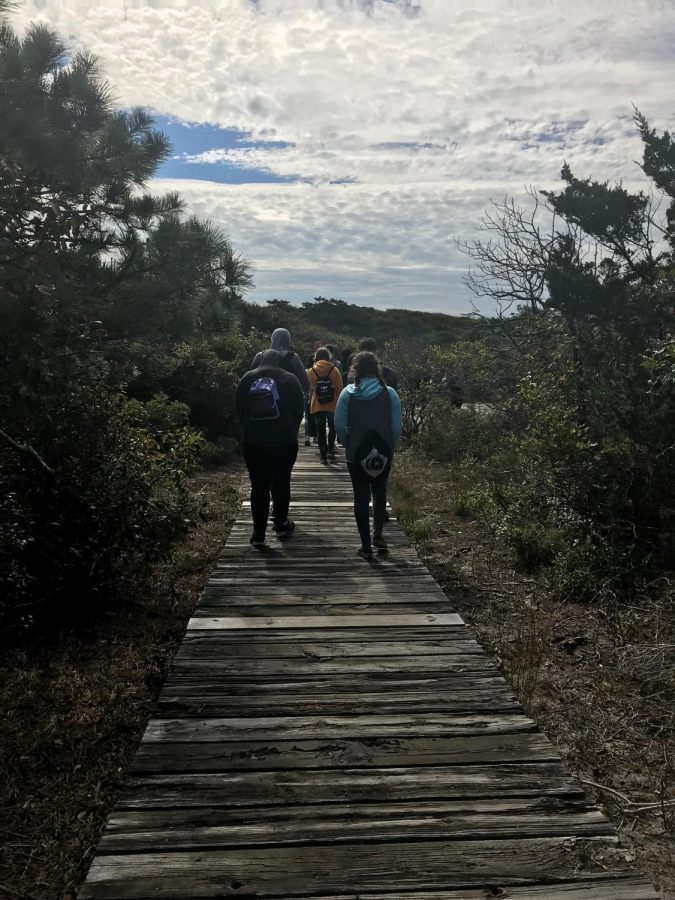Monarchs and Mosquitoes: AP Biology Students Visit Fire Island
October 5, 2018
Last Thursday, students in Ms. Visconti and Mr. Harding’s AP Biology classes embarked on a full-day, educational field trip to Fire Island. Students alternated between exploring the forest and the beach, constantly on the lookout for a glimpse of some of the fascinating species that inhabit Fire Island. They also the intermediate disturbance hypothesis, the importance of dunes, and several biotic and abiotic factors on Fire Island.
Varsha Talanki, a senior in Ms. Visconti’s class, enjoyed the trip. As she explained, “I really liked the beach and the view of the swale from it! The swale had beautiful scenery and the view from the beach was really nice because there weren’t any bugs there! I also saw some deer roaming at the beach.” The white-tailed deer are overpopulated on Fire Island, with the National Park Service considering several deer-management programs to cull the population, ranging from euthanizing some of the population to allowing a limited amount of hunters.
However, the deer population was only one of the sights that students hoped to find at Fire Island, as the monarch butterfly migration also occurs at this time of year. The field trip was specifically planned so that it would overlap with the brief time the butterflies spend near Long Island. However, students reported that they didn’t see many monarchs, besides an occasional individual or duo.
Mosquitoes and bugs proved to be a major issue for many students. The next day, many classmates arrived at school with numerous mosquito bites. As Varsha adds, “The mosquitoes were really bad when we went! Luckily, I was one of the few people who didn’t get bit but I would recommend pants and a sweatshirt because there were mosquitoes everywhere!” Still, even with some minor issues, the trip proved to be informative and engaging for the AP Biology students.



